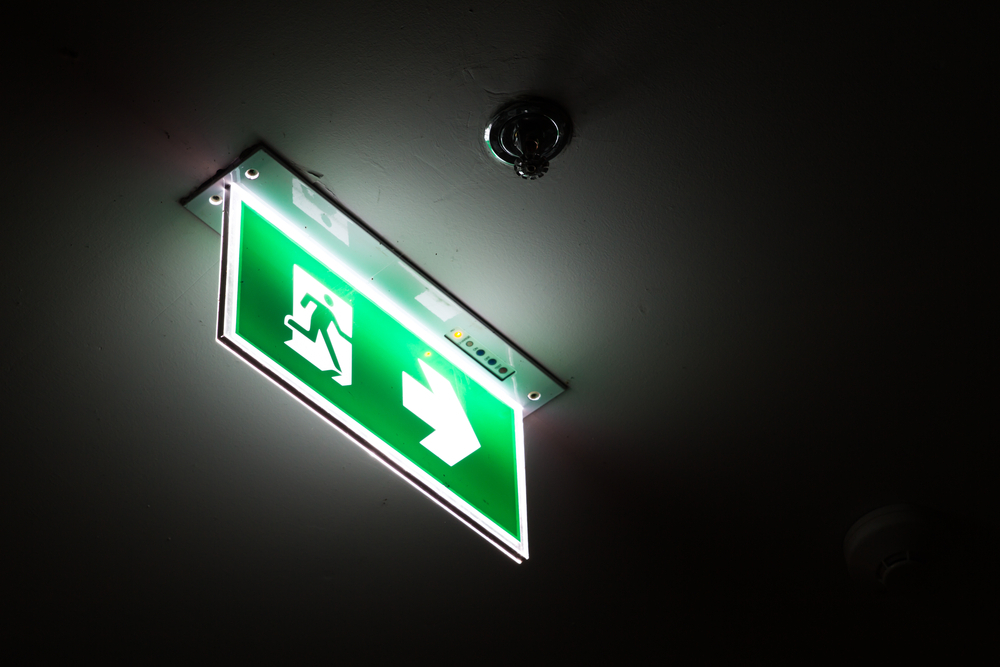How to check that an emergency light is working

Ensuring the proper functioning of emergency lights is essential for maintaining a safe environment during power outages or emergencies. Australian Standard AS 2293.1:2018 provides specific guidelines for the inspection and testing of emergency lighting systems within buildings.
1. Visual Inspection: Initiate the checking process with a visual inspection of the emergency light. Examine the unit for any visible signs of damage, corrosion, or obstruction that may impact its functionality. Regular visual inspections, as per AS 2293.1:2018, are crucial for identifying potential issues.
2. Power Source Verification: Confirm that the emergency light is connected to a reliable power source. AS 2293.1:2018 emphasizes the importance of ensuring a continuous power supply to the emergency lighting system, either through the mains or an alternative power supply, to guarantee operational readiness.
3. Functional Testing: Conduct functional tests to ensure that the emergency light operates as intended. Press the test button to simulate a power failure and confirm that the light switches on automatically. Functional tests, recommended by AS 2293.1:2018, verify the operational status of the emergency light.
4. Duration Test: Perform an annual duration test to assess the emergency light's ability to provide illumination for the required duration. AS 2293.1:2018 mandates this test to ensure that the light can sustain illumination throughout the specified period during an extended power outage.
5. Illuminance Levels Check: Measure the illuminance levels produced by the emergency light to ensure they meet the standards specified in AS 2293.1:2018. Adequate illuminance is crucial for guiding occupants along escape routes and providing a safe environment during emergencies.
6. Battery Voltage Verification: Regularly check the voltage of the emergency light's battery to confirm its charging status and overall health. AS 2293.1:2018 recommends routine voltage checks to ensure the reliability of the battery and its ability to power the light during emergencies.
7. Inspection of Light Covers and Lenses: Inspect the covers and lenses of the emergency light for cleanliness and damage. Clean covers and lenses, and replace them if necessary, as specified by AS 2293.1:2018, to maintain optimal light output and visibility.
8. Check for Proper Positioning: Ensure that the emergency light is positioned correctly to provide effective illumination along escape routes. AS 2293.1:2018 outlines specific requirements for the placement and spacing of emergency lights to ensure uniform coverage and visibility.
9. Inspection of Charging System: Inspect the charging system components, including the charging circuit and wiring, to ensure they are in good condition. Faulty charging systems can compromise the functionality of the emergency light. Regular inspections, per AS 2293.1:2018, help identify and address potential issues.
10. Accessibility of Controls: Verify that controls, including the test button and any adjustment knobs, are easily accessible for testing and maintenance. AS 2293.1:2018 emphasizes the importance of designing emergency lights with accessible controls to facilitate regular testing and adjustments.
11. Logbook Documentation: Keep a detailed logbook documenting the results of all tests, inspections, and maintenance activities related to the emergency light. AS 2293.1:2018 recommends maintaining comprehensive records to track the performance of the emergency lighting system over time and demonstrate compliance with standards.
12. Inspection of Connection Points: Inspect connection points, including terminals and wiring, to ensure they are secure and free from corrosion. Loose or corroded connections can affect the electrical integrity of the emergency light. AS 2293.1:2018 stresses the importance of maintaining secure and intact connections.
13. Calibration of Adjustable Lights: If applicable, calibrate adjustable emergency lights to ensure they are properly aligned. AS 2293.1:2018 recommends periodic calibration to maintain the correct direction and coverage of adjustable lights, enhancing their effectiveness during emergencies.
14. Review of Manufacturer's Instructions: Ensure that testing and inspection procedures align with the manufacturer's instructions for the specific emergency light model. AS 2293.1:2018 emphasizes the importance of following manufacturer guidelines to maintain the reliability and compliance of the emergency lighting system.
15. Verification of Emergency Exit Signage: If the emergency light includes exit signage, ensure that the signs are in good condition, properly illuminated, and positioned for optimal visibility. AS 2293.1:2018 provides guidance on the design, placement, and visibility of exit signs within the emergency lighting system.
16. Inspection of Components for Wear and Tear: Inspect all components of the emergency light for signs of wear and tear, including housing, mounting brackets, and fasteners. AS 2293.1:2018 recommends regular inspections to identify and address any issues that may compromise the structural integrity of the light.
17. Testing in Non-Emergency Conditions: Conduct tests during non-emergency conditions to assess the emergency light's functionality in normal operating scenarios. AS 2293.1:2018 suggests periodic testing in non-emergency conditions to ensure that the light responds appropriately to routine testing without external triggers.
18. Illumination Uniformity Check: Verify the uniformity of illumination provided by the emergency light along escape routes and open areas. AS 2293.1:2018 outlines specific requirements for achieving consistent illuminance levels to enhance visibility and guide occupants to safety.
19. Inspection of Seals and Gaskets: Inspect seals and gaskets to ensure they are intact and provide protection against environmental factors. AS 2293.1:2018 emphasizes the importance of maintaining effective seals to prevent ingress of dust, moisture, or other contaminants that may compromise the emergency light's performance.
20. Consideration of Environmental Factors: Take into account environmental factors that may impact the emergency light's performance, such as temperature, humidity, and exposure to harsh conditions. AS 2293.1:2018 recommends considering these factors during the installation and maintenance of emergency lighting systems to ensure optimal functionality.
21. Inspection of Charging Contacts: Inspect the charging contacts on the emergency light and the charging unit to ensure they are clean and free from corrosion. Dirty or corroded contacts can impede the charging process and affect the overall performance of the emergency light. AS 2293.1:2018 highlights the importance of keeping charging contacts in good condition.
Disclaimer
This information is provided with the expectation that individuals will independently evaluate and validate all inforrmation with accredited experts. Exiting assumes no responsibility for any harm, losses, or damages resulting from the utilization or dependence on this information .